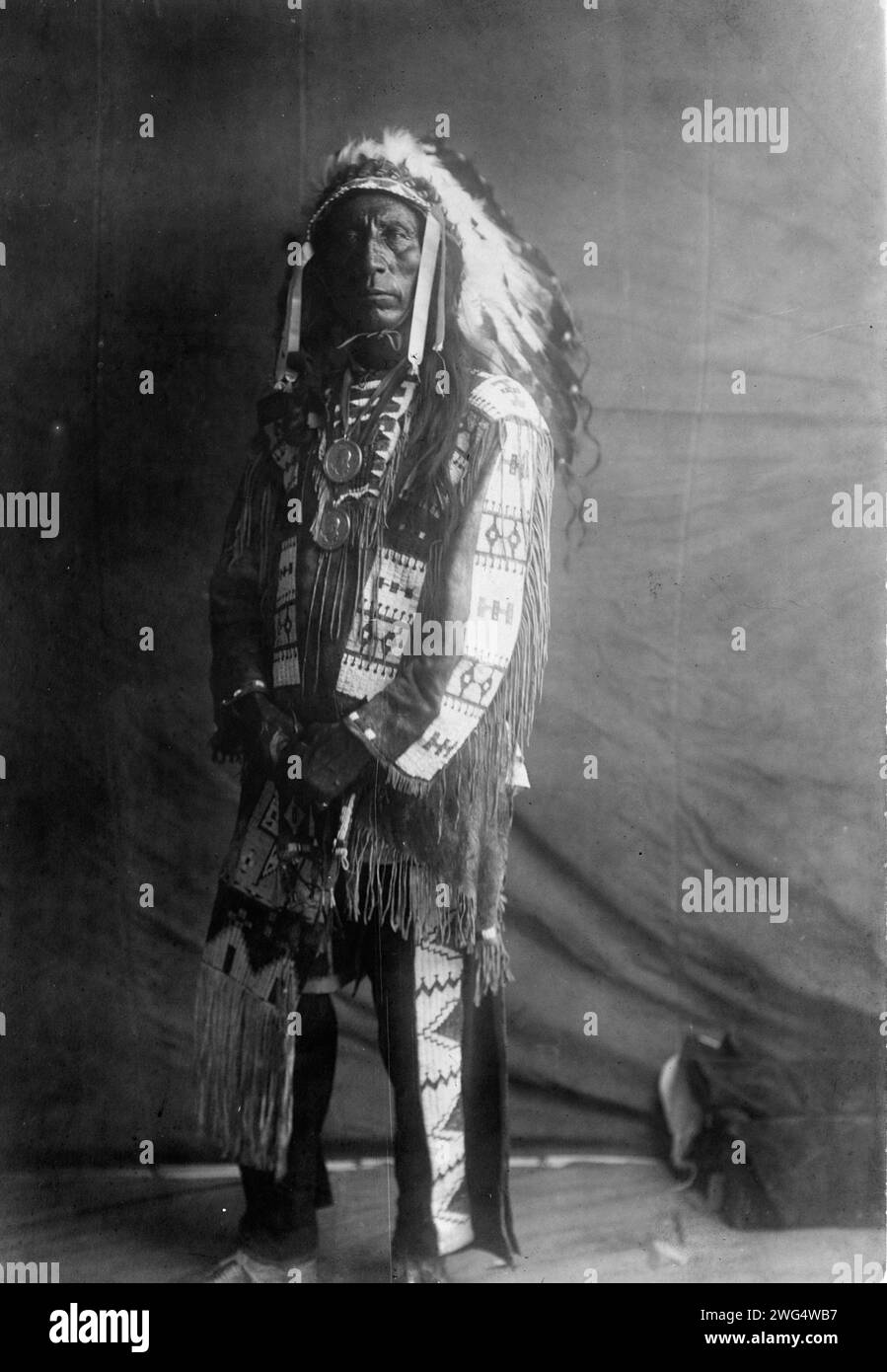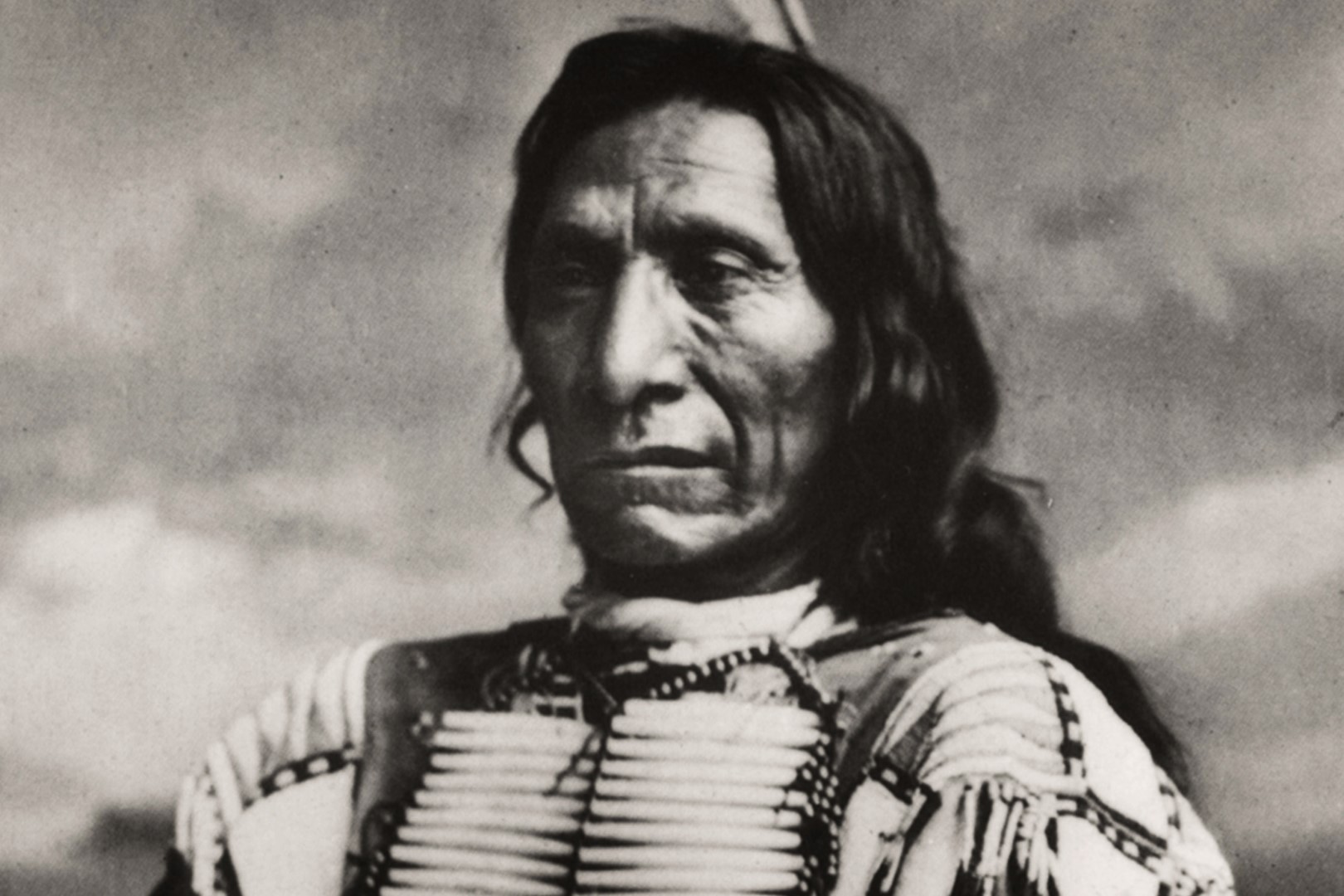
Red Cloud: The Unconquered Chief Who Forced America to Retreat
In the annals of American history, the names of many Native American leaders resonate with tales of courage, resistance, and tragedy. Yet, few achieved what Red Cloud of the Oglala Lakota accomplished: he waged a successful war against the United States and forced its government to concede to his terms in a signed treaty. More than just a formidable warrior, Red Cloud was a sagacious diplomat, a pragmatic leader, and a man who, until his dying day, sought to protect his people’s land and culture against an overwhelming tide of expansion. His story is not merely one of conflict, but of an iron will, strategic genius, and a profound, enduring commitment to his people.
Born Makhpiya Luta (Red Cloud) in 1822 near the Platte River in present-day Nebraska, he came of age during a period of immense change on the Great Plains. The Lakota, a vibrant and powerful people, were masters of their vast territory, their lives intricately woven with the buffalo herds that sustained them. But the arrival of European Americans, first as traders and then as settlers, brought disease, competition for resources, and an inexorable pressure that would forever alter their world.

Red Cloud’s early life was steeped in the traditions of the Oglala warrior society. He earned his reputation not through lineage alone, but through prowess in battle, cunning in strategy, and a deep understanding of his people’s ways. He distinguished himself in intertribal conflicts, particularly against the Crow and Pawnee, honing the tactical skills that would later confound the U.S. Army. He was known for his commanding presence, his intelligence, and an unwavering determination that inspired loyalty among his followers.
The stage for Red Cloud’s defining struggle was set in the mid-1860s. Following the end of the American Civil War, the United States turned its full attention westward. The discovery of gold in Montana spurred a rush of prospectors and settlers, leading to the creation of the Bozeman Trail. This trail, a shortcut from the Oregon Trail to the Montana gold fields, cut directly through the heart of the Powder River Country – the Lakota and Cheyenne’s most sacred and vital hunting grounds, guaranteed to them by the Fort Laramie Treaty of 1851.
To the Lakota, the Bozeman Trail was an existential threat. It not only brought trespassers onto their land but also decimated the buffalo herds and disrupted their way of life. When the U.S. Army, without consulting the Lakota, began constructing forts along the trail – Fort Phil Kearny, Fort C.F. Smith, and Fort Reno – Red Cloud saw it as a blatant act of invasion and a violation of all agreements. "The white men have crowded us out of a good country, and now they want to take the Black Hills and the Powder River. But I will not consent. We have come to a dead wall, and now we must fight," he declared, embodying the resolve that would define the next two years.
Thus began "Red Cloud’s War" (1866-1868), a conflict that stands unique in the history of Native American resistance. Unlike many other engagements, this was not a series of isolated skirmishes but a sustained, strategic campaign led by Red Cloud himself. He refused to sign any treaties that permitted the trail’s existence, declaring that his people would fight until the last soldier was removed.
Red Cloud’s strategy was brilliant in its simplicity and effectiveness. He understood that his warriors, though brave, could not defeat the technologically superior U.S. Army in direct, pitched battles. Instead, he employed guerrilla tactics: constant harassment, cutting supply lines, ambushing small detachments, and laying siege to the forts. His aim was to make the Bozeman Trail impassable and the forts untenable, forcing the Americans to abandon them.
The most famous engagement of the war, and a devastating blow to American morale, was the Fetterman Fight in December 1866. Captain William J. Fetterman, a cocky veteran who reportedly boasted he could ride through the entire Sioux Nation with just eighty men, led a detachment of 80 soldiers and civilians into an ambush near Fort Phil Kearny. Lured by a small decoy party, including the young Crazy Horse, Fetterman pursued them over a ridge, only to find himself surrounded by thousands of Red Cloud’s warriors. In less than an hour, Fetterman and all his men were annihilated. It was the U.S. Army’s worst defeat on the Great Plains up to that point, a stunning testament to Lakota tactical prowess and Red Cloud’s strategic planning.
The Fetterman Fight, along with other successful engagements like the Wagon Box Fight and the Hayfield Fight in 1867, demonstrated the futility of the U.S. military’s efforts to secure the trail. The forts were isolated, their garrisons demoralized, and the cost in lives and resources became unsustainable for Washington, D.C. Faced with an unwinnable war, the U.S. government decided to negotiate.
The resulting Fort Laramie Treaty of 1868 was an unprecedented triumph for Red Cloud. He refused to come to the negotiating table until the U.S. Army abandoned all three forts along the Bozeman Trail. In an astonishing concession, the U.S. government agreed. In August 1868, soldiers burned down Fort Phil Kearny and Fort C.F. Smith, leaving the ruins to be reclaimed by the Lakota. Only then did Red Cloud ride into Fort Laramie in November 1868 to sign the treaty.

This treaty established the Great Sioux Reservation, which encompassed a vast territory including the sacred Black Hills, and guaranteed the Lakota hunting rights in unceded territories. Crucially, it stipulated that no white person would be permitted to settle on or pass through this reservation without the consent of the Lakota. Red Cloud became the only Native American leader in U.S. history to have won a war against the United States and forced it to sign a treaty on his terms, including the abandonment of military outposts.
However, the peace was fragile and short-lived. The ink on the treaty was barely dry when gold was discovered in the Black Hills in 1874, leading to another massive influx of prospectors, in direct violation of the 1868 treaty. Red Cloud, now a leader committed to peace, understood the futility of another armed conflict against a now even more powerful United States. His focus shifted from warfare to diplomacy and advocacy.
He traveled to Washington D.C. multiple times, meeting with Presidents Ulysses S. Grant and Rutherford B. Hayes, eloquently arguing for his people’s rights, protesting broken treaties, and demanding the rations and provisions promised by the government. His visits were often marked by frustration, as he encountered bureaucratic indifference and outright deception. "They made us many promises, more than I can remember, but they never kept but one; they promised to take our land, and they took it," he famously lamented, encapsulating the tragic history of U.S.-Native American relations.
This pragmatic approach, however, often put him at odds with younger, more militant leaders like Sitting Bull and Crazy Horse, who chose to fight in the Great Sioux War of 1876-77. Red Cloud believed further warfare would only lead to more suffering and loss for his people. He opted for survival through adaptation and negotiation, a path that earned him both respect and criticism within his own nation. He tirelessly advocated for better conditions on the reservation, for fair treatment by Indian agents, and for the preservation of Lakota language and customs amidst forced assimilation policies.
Red Cloud lived a remarkably long life, dying in 1909 at the age of 87 on the Pine Ridge Reservation. He witnessed the near-total subjugation of his people, the decimation of the buffalo, and the radical transformation of the Plains. Yet, he never ceased to be a voice for the Oglala Lakota. He navigated the treacherous waters of reservation politics, often clashing with agents and missionaries, always striving to maintain a measure of sovereignty and dignity for his people.
His legacy is complex and enduring. Red Cloud was a warrior who understood when to fight and, perhaps more importantly, when to negotiate. He was a chief who adapted to new realities without ever abandoning his people’s core values. He stands as a towering figure of resistance, not only for his military genius but also for his unyielding commitment to justice and his tenacious advocacy in the face of overwhelming odds. Red Cloud remains a powerful symbol of defiance, resilience, and the unyielding spirit of the Native American people, a chief who, for a brief, glorious period, truly stood as the unconquered.


